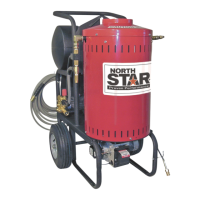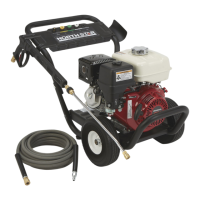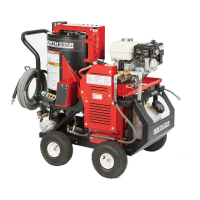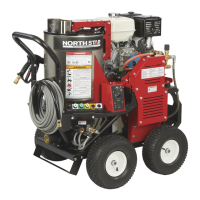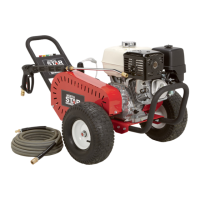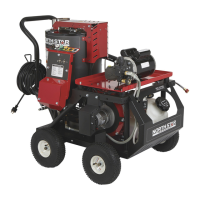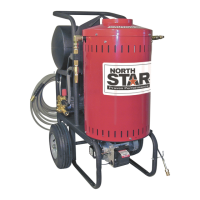Note: Use only the black low-pressure nozzle for
spraying chemicals, which provides the proper mixing
ratio.
Figure 10
Turn pressure washer off and depressurize line before
connecting a new nozzle. Engage safety latch on spray
gun. Connect appropriate nozzle according to “Quick
Connect Procedure.”
Step 2. Pre-Spraying Procedure
Safety Rules
Prevent slips/loss of balance. High-pressure spray
could cause you to lose balance from kickback forces,
and wet surfaces can be slippery.
• Keep good footing and balance at all times.
• Do not overreach.
• Do not stand on unstable support when spraying.
• Use extreme caution when spraying from a ladder
or scaffolding, ensure it is firmly anchored from
sway or tip-over. Use extreme caution to avoid
falling as spray gun kick can propel you off the
ladder or scaffolding.
• Be aware of puddles and slippery surfaces.
Ensure there is adequate drainage to prevent
pooling of water.
Keep spray away from electrical wiring. Spray
contact with electrical wiring will likely result in severe
electrical shock or electrocution.
Keep spray away from people. Never direct discharge
stream at or near any person. Do not allow any part of
the body to come in contact with the fluid stream.
Prevent surface damage & flying debris. Surfaces
being sprayed must be strong enough to withstand high-
pressure spray, or damage may result. In addition, high-
pressure spray will dislodge unsecured objects, surface
chips, and debris, resulting in hazardous flying objects
that can cause personal injury or property damage. Do
not spray brittle surfaces or breakable, fragile,
unsecured objects, such as:
• Stucco or laminar flagstone
• Some painted surfaces
• Windows or glass doors (because they may
break)
• Light fixtures, flowerbeds, mailboxes
• Unsecured, lightweight objects
Prepare to wash small parts in a basket so the pressure
does not push them away. Clamp down larger,
lightweight parts.
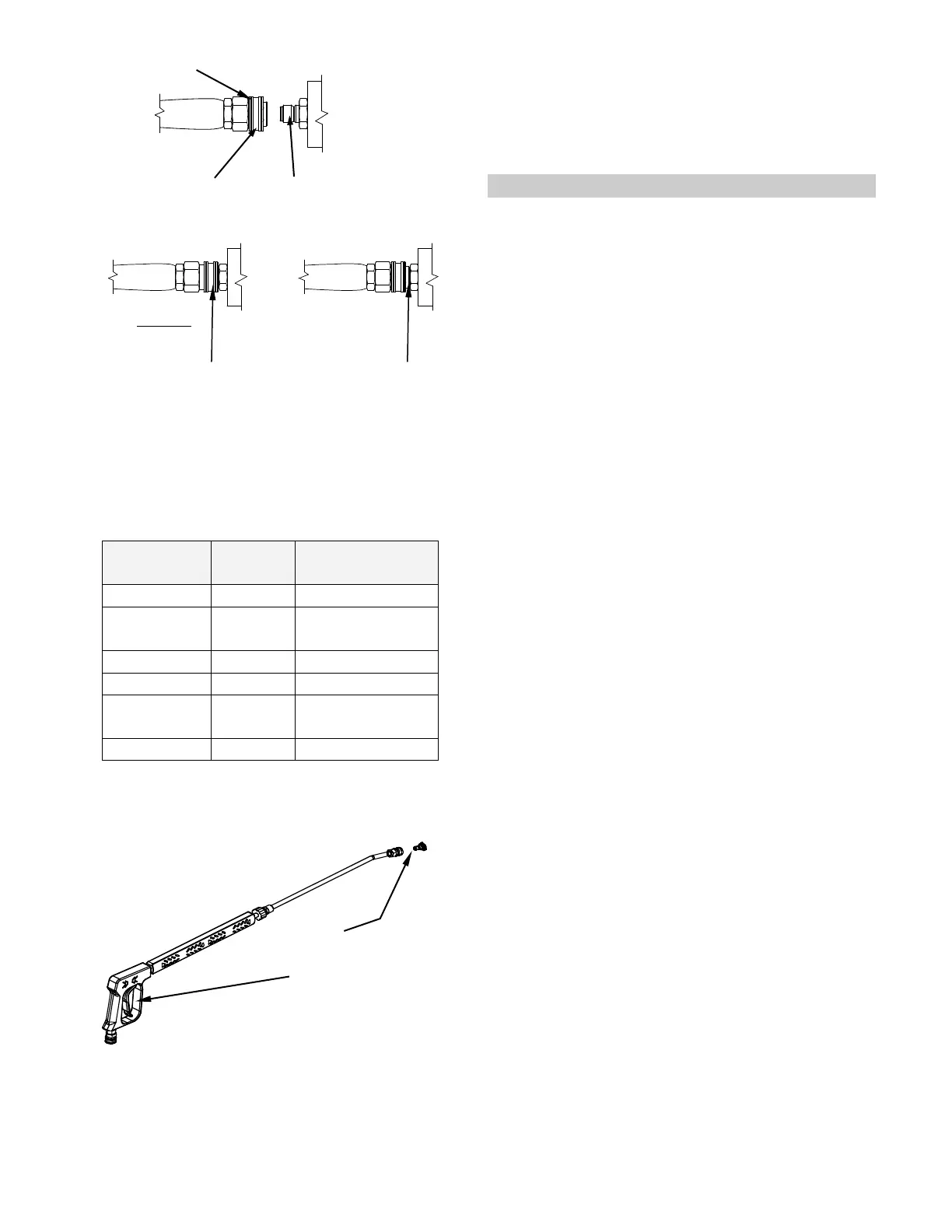